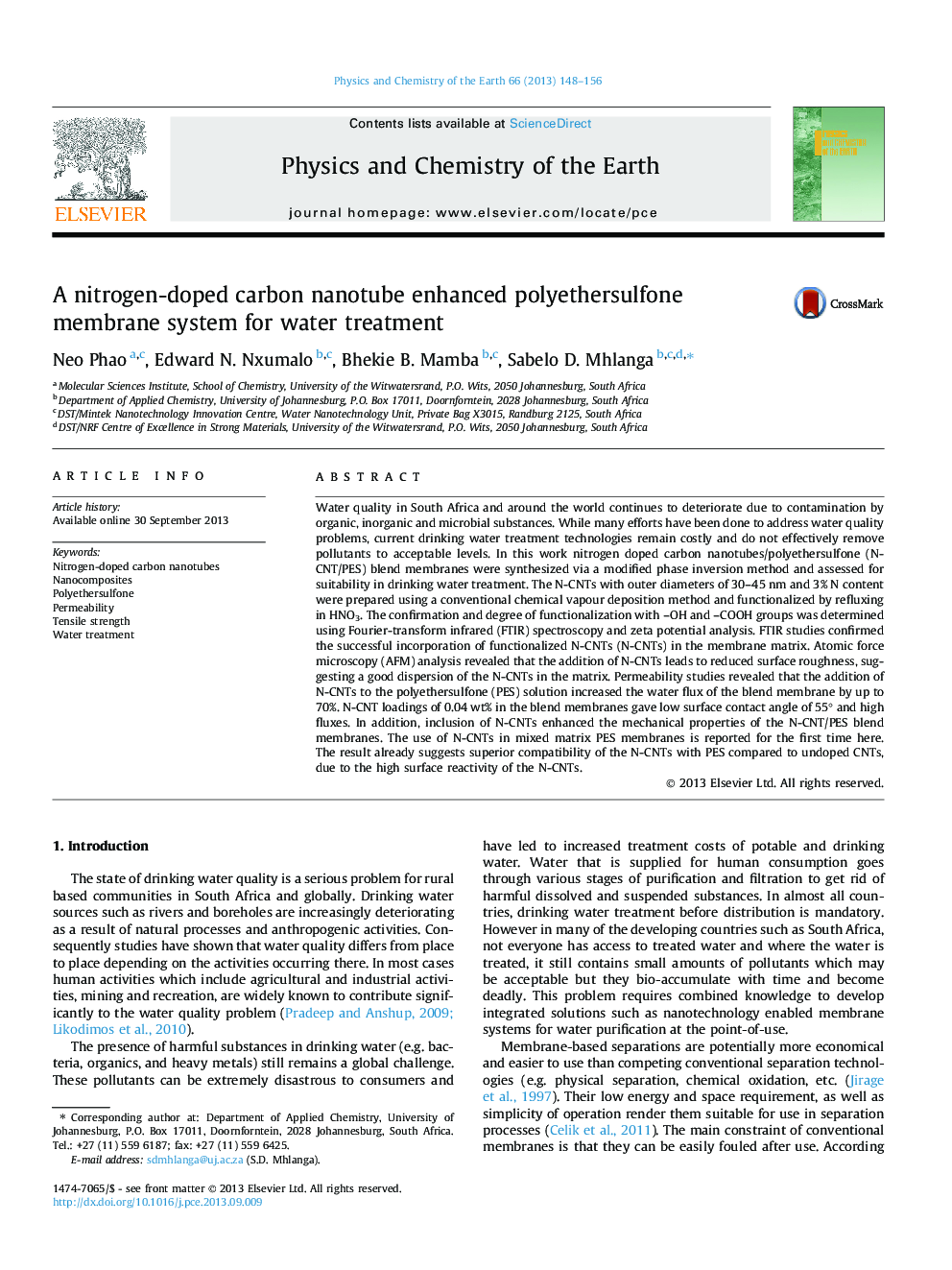| Article ID | Journal | Published Year | Pages | File Type |
|---|---|---|---|---|
| 4721036 | Physics and Chemistry of the Earth, Parts A/B/C | 2013 | 9 Pages |
•N-doped CNTs were blended with polyethersulfone membranes for the first time.•The N-CNTs were readily oxidized and dispersed in the membrane system.•The blend membranes have good flux (70% with contact angle of 55°) and rejections.•The mechanical properties of the blend membranes improved with addition of N-CNTs.
Water quality in South Africa and around the world continues to deteriorate due to contamination by organic, inorganic and microbial substances. While many efforts have been done to address water quality problems, current drinking water treatment technologies remain costly and do not effectively remove pollutants to acceptable levels. In this work nitrogen doped carbon nanotubes/polyethersulfone (N-CNT/PES) blend membranes were synthesized via a modified phase inversion method and assessed for suitability in drinking water treatment. The N-CNTs with outer diameters of 30–45 nm and 3% N content were prepared using a conventional chemical vapour deposition method and functionalized by refluxing in HNO3. The confirmation and degree of functionalization with –OH and –COOH groups was determined using Fourier-transform infrared (FTIR) spectroscopy and zeta potential analysis. FTIR studies confirmed the successful incorporation of functionalized N-CNTs (N-CNTs) in the membrane matrix. Atomic force microscopy (AFM) analysis revealed that the addition of N-CNTs leads to reduced surface roughness, suggesting a good dispersion of the N-CNTs in the matrix. Permeability studies revealed that the addition of N-CNTs to the polyethersulfone (PES) solution increased the water flux of the blend membrane by up to 70%. N-CNT loadings of 0.04 wt% in the blend membranes gave low surface contact angle of 55° and high fluxes. In addition, inclusion of N-CNTs enhanced the mechanical properties of the N-CNT/PES blend membranes. The use of N-CNTs in mixed matrix PES membranes is reported for the first time here. The result already suggests superior compatibility of the N-CNTs with PES compared to undoped CNTs, due to the high surface reactivity of the N-CNTs.
